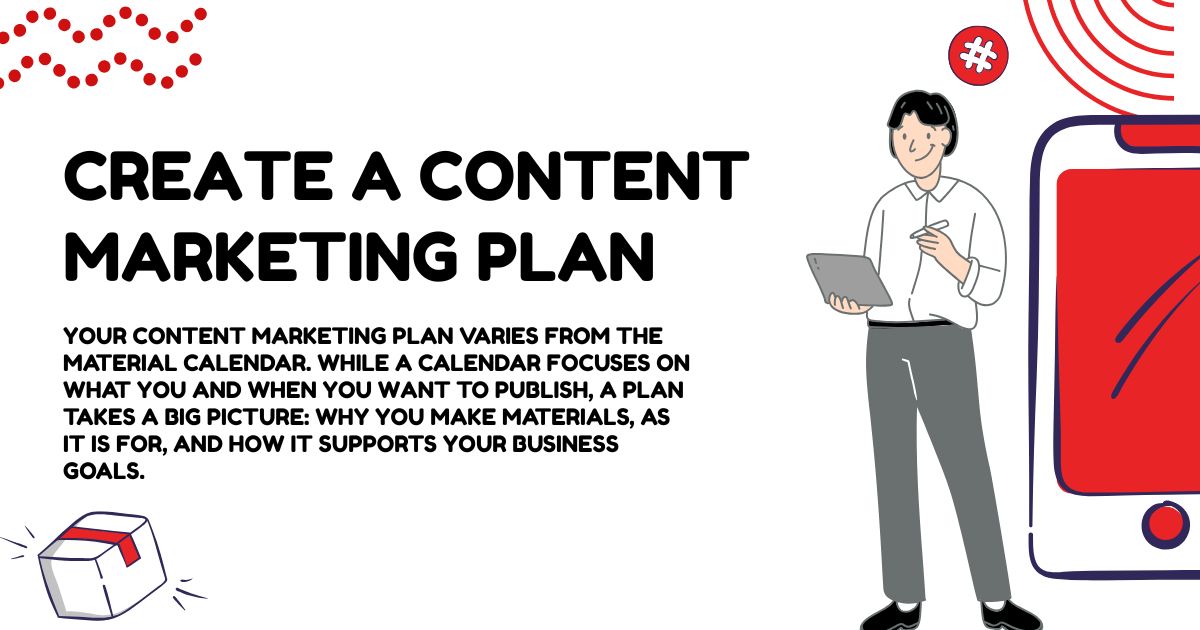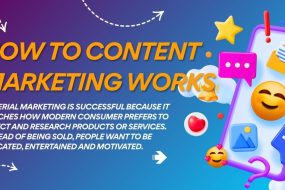
Content marketing can feel overwhelming. With countless platforms, formats, and strategies competing for your attention, many businesses struggle to create content that drives real results. The solution isn’t creating more content—it’s creating the right content with a strategic plan behind it.
A well-crafted content marketing plan serves as your roadmap to success. It aligns your content efforts with business goals, ensures consistency across channels, and helps you measure what matters. This guide will walk you through building a content marketing plan that transforms your marketing efforts from scattered activities into a cohesive strategy that drives growth.
Understanding Content Marketing Strategy Fundamentals
Before we dive into the strategy, let’s establish what material marketing really means. Material marketing involves creating valuable, relevant materials to attract and attract clearly defined target groups. The final goal is to perform profitable customer action.
Your content marketing plan varies from the material calendar. While a calendar focuses on what you and when you want to publish, a plan takes a big picture: why you make materials, as it is for, and how it supports your business goals.
Successful material marketing schemes share general properties. They match professional goals, target specific audience segments and include the average purpose. They also eat for available resources and establish clear workflows for material production and distribution.
Setting Clear Goals and Objectives

Your content marketing goals should be directly linked to your business goals. Start by identifying what you want to achieve through material marketing. General goals include increasing brand awareness, generating potential customers, caring for existing customers or establishing ideas.
Make wide goals into specific, average dimensions using smart frames. Instead of “raising brand awareness”, “traffic increases by 30% within six months” or “developing email customers with 500 new registrations in the next quarter. ”
Think of both short -term and long -term goals. Short -term goals can focus on immediate matrix as a social media involvement or blog traffic. Objectives for long -term can target income growth, expansion of customer treatments or extension of market shares.
Documents your goals clearly and share them with your team. This ensures that everyone understands what success looks and can make decisions that support these goals.
Identifying Your Target Audience
Effective material marketing talks directly with your ideal customers. Start by analyzing your existing customer base to identify patterns and general properties. See demographics, behavior, preferences and pain points.
Create a detailed buyer who represents the parts of your target audience. Each personality should include demographic information, goals, challenges, preferred communication channels and material preferences. Give each personality a name and back story so they can feel real.
Customers consider segments of different target groups in different stages. Some require different materials compared to the loyal customer considering any upgrade that detects your brand. Your content plan should address each step on this journey.
Research where the audience spends time online. Do they like LinkedIn or Instagram? Do they hear podcasts or watch YouTube videos? Understanding the habits of consumption of the content helps you choose the right distribution channel.
Read our latest blog 7 Critical SEO Mistakes Killing ROI
Conducting a Content Audit
Before making new materials, you need to evaluate what you already have. A significant revision reveals intervals in your current strategy and identifies high -performing materials that you can present or expand again.
Start by listing all existing content on your site, blogs, social media and other channels. List each piece with details such as publication date, format, subject and viewing measurements.
Analyze the viewing data to identify the most successful material. Look at Matrix as a page view, engagement rate, conversion frequency and social stocks. Understanding what resonance with the audience informs future material decisions.
Identify the material intervals where you lack coverage of important subjects or public needs. Also note that the old material must be updated or removed. This audit creates a basis for your content plan and prevents duplicate efforts.
Choosing the Right Content Types and Formats
Different material formats serve different purposes and appeal to the preferences of different target groups. Excel in blog posts that provide intensive information and improve the visibility of the search engine. Video scenes link students and work well on social media. Infographic simplifies complex information and encourages sharing.
When choosing shapes, consider the audience’s preferences and consumer habits. B2B viewers may prefer whitepads and case studies, while a consumer viewers may be more related to video and social media posts.
Think of the team’s abilities and resources. Different skills and equipment are required to write blog posts to create high quality video content. Start with formats that match your current opportunities, and then expand as they grow.
Planning content from the beginning. A comprehensive blog post can be several posts in social media, an infographic, a podcast episode or a video. This approach maximizes content investment and reaches parts of different target groups.
Creating a Content Calendar

A material calendar converts your strategy into action plans. It provides structure, ensures stability and helps you plan around important dates and events.
Begin by mapping the relevant main dates that are relevant to your business and industry. Include product launch, industry conference, seasonal trends and holidays. These dates anchor your content plan and ensure relevant material over time.
Plan material subjects or subjects for each month or quarter. This thematic approach harmonizes and lets you dive deep into important subjects. For example, you can dedicate round setting materials in January or spring cleaning tips in April.
Include only details beyond the publication dates. Mark material format, target keywords, distribution channels and members of the responsible team. This extensive approach prevents scratches at the last minute and ensures that nothing falls through the cracks.
Do flexibility in your calendar. Let the room be for the content at the time of the industry’s news, trendy subjects or time to respond to unexpected opportunities. A stiff calendar that may not be compatible with the changing conditions limits the effect of your content.
Developing Your Content Creation Process
The installation of clear workflows ensures continuous quality and efficient production. From the first idea to the final publication, define each step of your material construction process.
Start with the performance sessions where team members can suggest subjects and formats. Use public research, keyword data and industry trends to generate ideas. Keep a running list of potential subjects so you get stuck without material ideas at any time.
Make templates and style guides that ensure stability in all materials. Include guidelines for tone, voice, formatting and visual elements. This standardization helps maintain quality when different members of the team make materials.
Install reviews and approval procedures that balance quality control with efficiency. Define who needs to undergo different types of materials and determine realistic timelines for feedback and modification.
Think of the material construction tool that streamlines your process. Project management software can trace progress and time limit. Grammar chips ensure flawless material. Design equipment helps create sustained views.
Measuring Success and Making Adjustments
Your content marketing plan requires underlying measurement and adaptation processes. Regular analysis helps you understand what works and guides future decisions.
Identify the most important performance indicators (KPI) that match your goals. If your goal is the main generation, you can track the matrix as an email, downloads of content and submission of contact form. For purposefulness goals, monitoring range, impressions and mention of brands.
Set the tracking system before starting your content. Use analysis tools to monitor the site’s traffic, commitment to social media and conversion frequencies. E -post marketing platforms provide detailed matrix for open prices and clicks.
Plan regular review sessions to analyze performance and identify trends. Monthly or quarterly reviews allow you to detect the pattern and make necessary adjustments. Don’t wait until the end of the year to evaluate your progress.
When the data shows that your strategy is not working, you must be ready to pee. Material marketing requires continuous testing and processing. What works for one viewer section cannot work for another.
Maximizing Your Content Marketing Investment
Efforts are required to make material marketing plans, but it pays dividends over time. Your plan becomes a living document that guides the decisions, prevents a waste of efforts and ensures that your content supports your business goals.
Start implementing your plan gradually. You don’t have to start everything at once. Start with one or two types of materials and channels, and then expand by creating self -confidence and abilities.
Remember that material marketing is a long -term strategy. The results often take months to become physical, especially for SEO for patient acquisition centric materials. Be obliged to your plan while keeping flexible enough to customize based on display data.
The most successful material marketing schemes are constantly evolving. Regular reviews, public responses and performance data should inform about the update of your strategy. This repetition method ensures that your content marketing remains effective as your business and public need change.


















No Comments